Ancient Dacian Gold Helmet With Piercing Evil Eyes
A. Sutherland - AncientPages.com - This golden helmet is over two millennia old and was accidentally found in Poiana Cotofenesti (now called Poiana Varbilau), southern Romania, in 1929 (or in the spring of 1928).
The Golden Helmet of Coțofenești. A Geto-Dacian helmet dating from the first half of the 4th century BC, uncovered by chance. Image credit: Radu Oltean - CC BY-SA 3.0
The helmet was found to be a remarkably well-preserved artifact (only the part of its skull cap is missing), and in this state of preservation, the artifact is 25 cm tall and weighs 770 grams. Its diameter is 13.92 mm.
The helmet's lower part is cylindrical and has the opening of the rectangular shape for the front and the ears, with outlines similar to the "U" (reversed). Both the cheekbones and the head protectors were fixed and immobile.
The parade and ritual helmet from Poiana Cotofenesti was made of two pieces of cold-rolled gold plate from a natural, unrefined gold ingot with the composition: Au = 760 ‰, Ag = 225 ‰, and Cu = 10 ‰. This Dacian helmet provided a good and stable head covering.
It was created from a relatively thick gold sheet by repeated beating on a wooden support.
A Geto-Dacian helmet dating from the first half of the 4th century BC, uncovered by chance. Graphical reconstruction by Radu Oltean. Image credit: Radu Oltean - CC BY-SA 3.0
The gold plate used for producing the Cotofanesti helmet has varying thicknesses. They range from 2.82 mm at the base to 0.76 mm in the upper area of the hold.
However, we must remember that the gold, even in the thick sheet, has a low hardness, and a helmet like this was certainly not sufficient enough to defend the battle.
The helmet was most probably a luxurious ceremonial piece to emphasize, for the bearer, his preeminent position in a more structured social or military hierarchy. A craftsman made the helmet of the local Thracian tribes of Geto-Dacians.
Helmet of Cotofenesti - A Geto-Dacian helmet dating from the first half of the 4th century BC, uncovered by chance. Mythological scene on the side. Image credit: Radu Oltean - CC BY-SA 3.0
The Getae and the Dacians were ancient Thracian peoples who lived in Moesia, on the northern plain of the river Danube, and in the Carpathian Mountains, approximately in modern-day Romania and Moldova bordered by Romania to the west and Ukraine to the north, south, and east.
Researchers have not been ale to reconstruct these ancient people's religion. However, it is known that like the religion of the ancient Celts, it represents one of the most fascinating chapters in the long history of Indo-European belief systems outside the Greco-Roman world.
The Getae and Dacians worshiped Zalmoxis, a divinity who was probably an ancient and prominent religious reformer to whom the beginnings of Getic kingship are also related. Herodotus mentions the Getae, and says that others "surrendered without a fight to Darius" but" the Getae resisted stubbornly, and were enslaved at once, the bravest and most just Thracians of all..."Histories Book IV, 93–96.
Large Eyes And Eyebrows Twisted Upwards And Their Symbolic Meaning
So the Helmet of Cotofenesti may also have been the sacred helmet of Zalmoxis, the living god-prophet of the Dacians, or belonged to an unknown, aristocratic warlord or a Geto-Dacian king, the head of a local political formation formed in the area at the end of the 5th or the beginning of the 4th century BC.
As such, it was declared the treasure of a tribe chief or even a union of tribes.
Unique image from movie Dacii showing Decebalus wearing an incorrectly restored version of the Helmet of Coţofeneşti. (1967 Dacii movie by Sergiu Nicolaescu) - source
The helmet is decorated with many conical rosettes arranged in horizontal rows, a scene of the sacrifice of a ram, and two divided registers depicting mythical creatures.
The frontal part of the helmet is rectangular and decorated with two large eyes and eyebrows twisted upwards.
These eyes are the most striking decorative element of the helmet, supposedly having the power to avert evil influences, bad luck, and magic spells.
The intriguing eyes could also symbolize: "I see twice as well; I have eyes like my hawk."
The artifact is now kept at the National History Museum of Romania.
Written by – A. Sutherland - AncientPages.com Senior Staff Writer
Updated on April 9, 2023
Copyright © AncientPages.com All rights reserved. This material may not be published, broadcast, rewritten or redistributed in whole or part without the express written permission of AncientPages.com
Expand for referencesMore From Ancient Pages
-
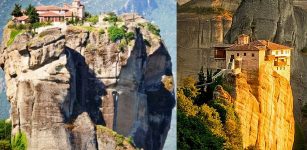 Meteora – A Sanctuary Of Harmony And Quietness “Hanging” In The Sky
Civilizations | Aug 14, 2015
Meteora – A Sanctuary Of Harmony And Quietness “Hanging” In The Sky
Civilizations | Aug 14, 2015 -
 Oldest Indo-European Calendar Based On The Orion Constellation Is Engraved On A Vucedol Vessel
Artifacts | Jun 7, 2021
Oldest Indo-European Calendar Based On The Orion Constellation Is Engraved On A Vucedol Vessel
Artifacts | Jun 7, 2021 -
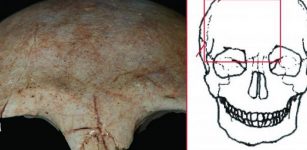 Ancient Warfare And Continuous Rise In Global Population – Is There A Connection?
Archaeology | Sep 13, 2021
Ancient Warfare And Continuous Rise In Global Population – Is There A Connection?
Archaeology | Sep 13, 2021 -
 Oldest Writing System Among Slavs To Be Germanic Runes – New Study
News | Feb 15, 2021
Oldest Writing System Among Slavs To Be Germanic Runes – New Study
News | Feb 15, 2021 -
 Archaeologists Discover Mysterious Floor Made Of Bones In Alkmaar, Netherlands
Archaeology | Dec 23, 2024
Archaeologists Discover Mysterious Floor Made Of Bones In Alkmaar, Netherlands
Archaeology | Dec 23, 2024 -
 On This Day In History: Statue of Liberty Arrived In New York Harbor – On June 17, 1885
News | Jun 17, 2016
On This Day In History: Statue of Liberty Arrived In New York Harbor – On June 17, 1885
News | Jun 17, 2016 -
 Frightening Legend Of Tate’s Hell Swamp And The Curse Of The Native American Medicine Man
Featured Stories | Feb 12, 2022
Frightening Legend Of Tate’s Hell Swamp And The Curse Of The Native American Medicine Man
Featured Stories | Feb 12, 2022 -
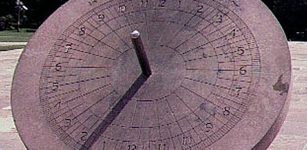 Gnomon: Ancient Time Measuring Instrument Used By Babylonians, Egyptians And Chinese
Ancient Technology | Nov 3, 2016
Gnomon: Ancient Time Measuring Instrument Used By Babylonians, Egyptians And Chinese
Ancient Technology | Nov 3, 2016 -
 Does This Cathedral Offer Evidence Our Calendar Is ‘Missing’ 297 Years?
Featured Stories | May 6, 2022
Does This Cathedral Offer Evidence Our Calendar Is ‘Missing’ 297 Years?
Featured Stories | May 6, 2022 -
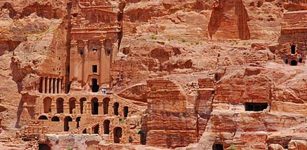 Skilled Nabataeans Celestially Aligned Petra’s Wonderful Architecture
Featured Stories | Mar 6, 2014
Skilled Nabataeans Celestially Aligned Petra’s Wonderful Architecture
Featured Stories | Mar 6, 2014 -
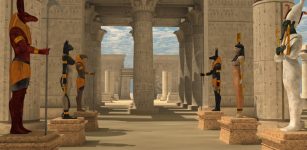 Zep Tepi – When Gods Established Their Kingdom On Earth In Egypt
Egyptian Mythology | May 23, 2021
Zep Tepi – When Gods Established Their Kingdom On Earth In Egypt
Egyptian Mythology | May 23, 2021 -
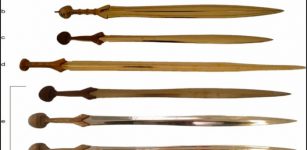 Bronze Age Swords Were Used By Skilled Fighters – New Study
Archaeology | Apr 29, 2020
Bronze Age Swords Were Used By Skilled Fighters – New Study
Archaeology | Apr 29, 2020 -
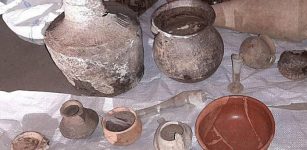 Europol Reports: ‘Millions’ In Stolen Treasures After Busting Crime Gang In Bulgaria – Recovered
Archaeology | Jul 4, 2020
Europol Reports: ‘Millions’ In Stolen Treasures After Busting Crime Gang In Bulgaria – Recovered
Archaeology | Jul 4, 2020 -
 Ancient Ritual Bundle From Bolivia Reveals Multiple Psychotropic Plants
Archaeology | May 7, 2019
Ancient Ritual Bundle From Bolivia Reveals Multiple Psychotropic Plants
Archaeology | May 7, 2019 -
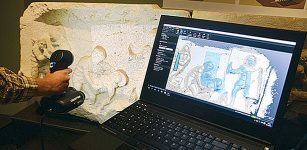 Archaeologists Use Laser Technology To Create Digital Models Of Ancient Artifacts
Archaeology | Jan 28, 2016
Archaeologists Use Laser Technology To Create Digital Models Of Ancient Artifacts
Archaeology | Jan 28, 2016 -
 Only Apocalyptic Destruction Can Eliminate The Gap Between Rich And Poor – Historian Says
Featured Stories | Jun 6, 2018
Only Apocalyptic Destruction Can Eliminate The Gap Between Rich And Poor – Historian Says
Featured Stories | Jun 6, 2018 -
 Evidence Of A Lost Advanced Ancient Civilization In Cincinnati – Remarkable Artifacts And Ancient Bodies That Shouldn’t Exist
Ancient Mysteries | May 8, 2018
Evidence Of A Lost Advanced Ancient Civilization In Cincinnati – Remarkable Artifacts And Ancient Bodies That Shouldn’t Exist
Ancient Mysteries | May 8, 2018 -
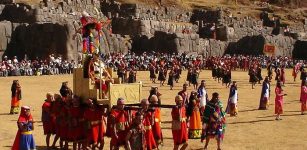 What Was Inti Raymi And Why Was It Celebrated By Inca?
Ancient History Facts | Dec 16, 2017
What Was Inti Raymi And Why Was It Celebrated By Inca?
Ancient History Facts | Dec 16, 2017 -
 Neanderthal And Denisovan Blood Groups Deciphered And The Results Are Surprising
Archaeology | Aug 2, 2021
Neanderthal And Denisovan Blood Groups Deciphered And The Results Are Surprising
Archaeology | Aug 2, 2021 -
 LIDAR Discovers Huge Abandoned Zapotec City With Temples, And Ball Courts In Oaxaca, Mexico
Archaeology | Jan 30, 2025
LIDAR Discovers Huge Abandoned Zapotec City With Temples, And Ball Courts In Oaxaca, Mexico
Archaeology | Jan 30, 2025




